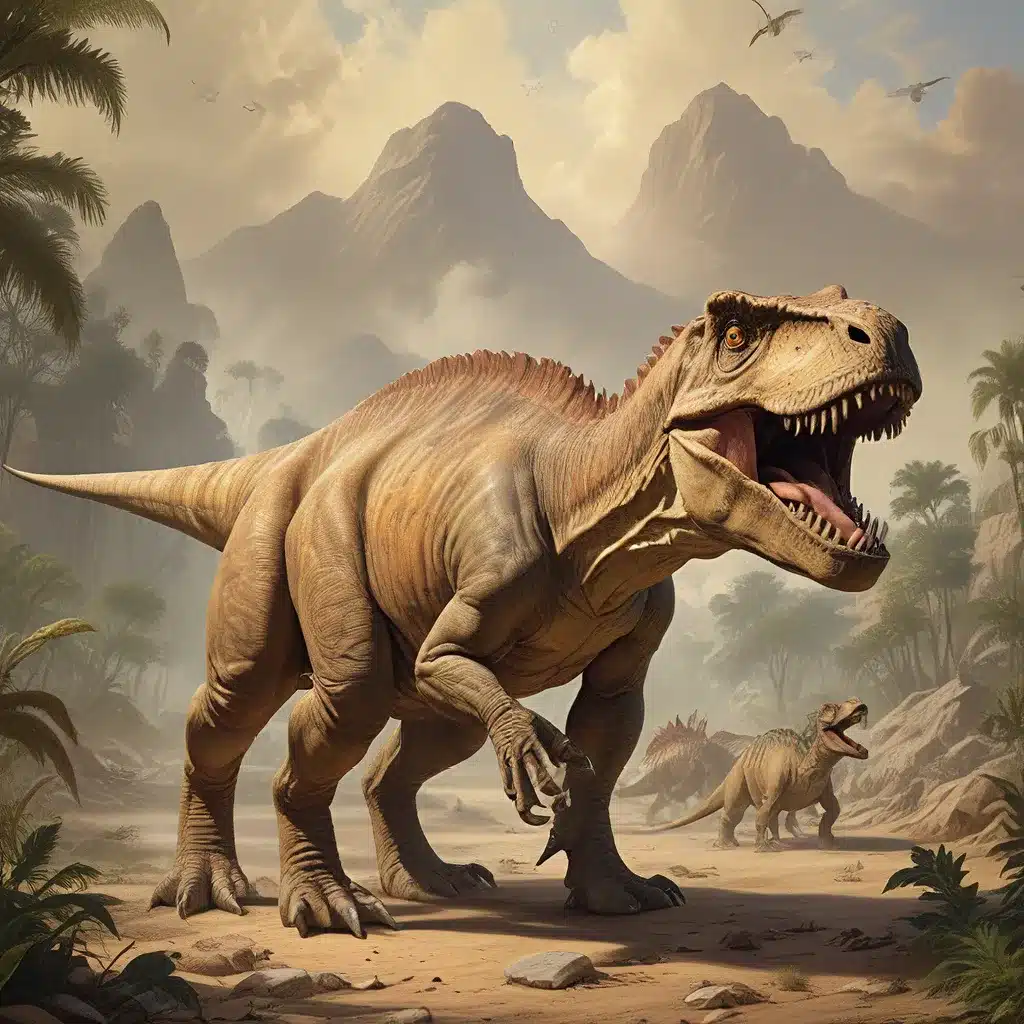
The fossil record has long been a source of fascination and speculation, revealing tantalizing glimpses into the distant past. One of the most captivating aspects of this ancient legacy is the intriguing connection between dinosaur remains and the mythologies of ancient cultures. As paleontologists and archaeologists delve deeper into these enigmatic connections, a rich tapestry of stories emerges, challenging our understanding of how these colossal creatures were perceived and interpreted by our ancestors.
Uncovering the Roots of Mythological Creatures
The griffin, a legendary creature with the body, tail, and back legs of a lion, as well as the head, wings, and front talons of an eagle, has long captured the imagination of storytellers and artists. However, recent research suggests that this mythical being may have its origins in the fossil remains of the Protoceratops and Psittacosaurus, two dinosaur species native to the steppes of Central Asia.
Adrienne Mayor, a historian of ancient science and a classical folklorist, argues that the ancient Greeks interpreted these fossilized skeletons as the bones of the griffin. The distinctive features of the Protoceratops, such as its four-legged stance and beak-like structure, may have given rise to the griffin’s unique appearance, as described in the writings of ancient authors like Pliny, Pausanias, and Ctesias.
Legends of Giants and Heroes
The ancient Mediterranean region has also yielded a trove of fossil remains, which were often interpreted as the bones of legendary giants or heroes of Greek mythology. Pliocene megafauna, such as mastodons, cave bears, and rhinoceri, were frequently identified as the remains of the Gigantomachy (the battle between the Olympian gods and the giants) or as the bones of famous figures like Theseus and Heracles.
Adrienne Mayor notes that this “vigorous early traffic in celebrity relics” helped to solidify the concept of “heroes’ bones” as a term for any large prehistoric skeleton that came to light in later Roman times. These ancient interpretations of fossils as the remains of legendary figures highlight the deep-rooted human desire to connect the past with the present, and to find tangible links to our mythological heritage.
Reverence for Prehistoric Remains
The reverence and ritual treatment afforded to these fossil remains by ancient cultures is particularly fascinating. Adrienne Mayor cites instances of ancient tombs where gigantic fossil bones were found buried alongside Bronze Age weaponry or stone tools, suggesting that humans in earlier times also recognized the significance of these prehistoric relics and accorded them a ceremonial burial.
One intriguing example is the story of Tjanefer’s sea urchin, a fossil with an inscription in hieroglyphics that records the name of the individual who discovered it. This not only demonstrates the ancient Egyptians’ appreciation for these natural wonders but also their attempts to document and preserve the memory of those who encountered them.
Evolving Perspectives on Prehistoric Life
The ancient Greeks’ understanding of the possibility of evolution and the true nature of fossils has been a subject of much scholarly debate. While Adrienne Mayor notes that the discussion can be “occasionally dry,” the insights gleaned from her research shed light on the complex and often nuanced ways in which our ancestors grappled with the implications of these prehistoric remains.
The discovery of the Hesione vase, which may depict a fossil skull weathering out of a cliff, suggests that the ancient Greeks were not only aware of the existence of fossils but were also actively attempting to interpret their origins and significance. This opens up fascinating avenues for further exploration, as we seek to understand the evolving perspectives and knowledge of our forebears regarding the ancient world.
Bridging the Past and Present
The interplay between dinosaur fossils and ancient mythologies is a testament to the enduring human fascination with the past. As we continue to uncover and study these remarkable relics, we gain a deeper appreciation for the ways in which our ancestors sought to make sense of the world around them, weaving their observations and discoveries into the tapestry of their cultural narratives.
By reexamining the role of dinosaurs in ancient mythologies, we not only shed light on the rich and diverse perspectives of our forebears but also gain a richer understanding of our own place in the grand sweep of Earth’s history. This ongoing dialogue between past and present is a testament to the power of the fossil record to inspire wonder, curiosity, and a deeper connection to the world that came before us.


